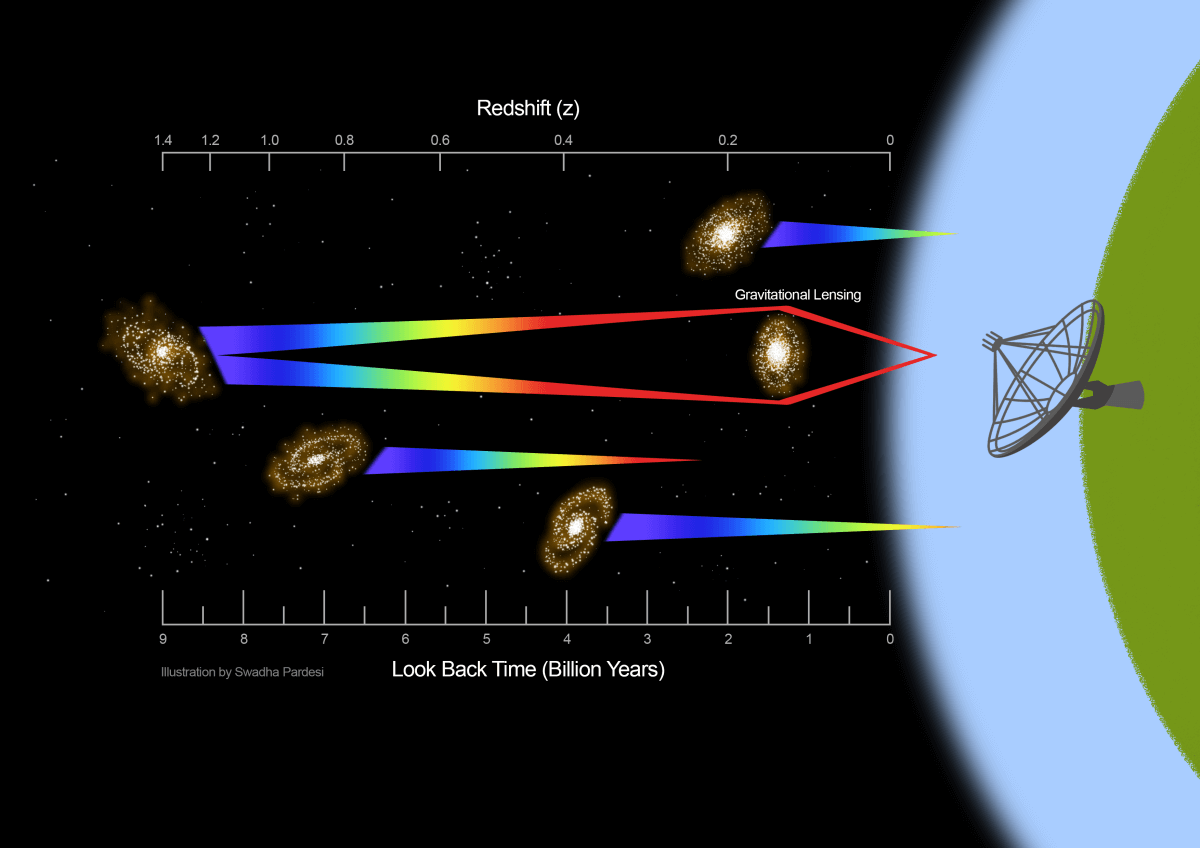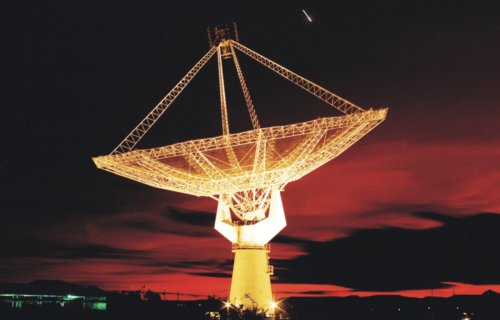MONTREAL, Quebec — Astronomers are literally examining a radio signal which comes from “a long time ago in a galaxy far, far away.” Scientists at McGill University say this signal is breaking records, coming from a distant galaxy further away from Earth than any other signal before. It’s helping researchers learn more about the structure of the universe nearly nine billion years ago!
Study authors explain that radio signals emanating from other galaxies weaken over great distances. This means it’s more difficult for current radio telescopes to pick up signals from galaxies which are farther away from our planet than others.
In this case, a team from Canada and India captured this record-breaking signal at a specific wavelength known as the 21 cm line. Using the Giant Metrewave Radio Telescope, it’s the first time this type of radio signal has been detected at such a long distance.
“A galaxy emits different kinds of radio signals. Until now, it’s only been possible to capture this particular signal from a galaxy nearby, limiting our knowledge to those galaxies closer to Earth,” says Arnab Chakraborty, a McGill post-doctoral researcher, in a university release.
“But thanks to the help of a naturally occurring phenomenon called gravitational lensing, we can capture a faint signal from a record-breaking distance. This will help us understand the composition of galaxies at much greater distances from Earth.”

The signal dates back 8.8 billion years!
Distant signals don’t just reveal something about the galaxies they come from, they also allow scientists to figurately travel back through time. The study finds that this radio signal was emitted by the star-forming galaxy SDSSJ0826+5630 when the universe was just 4.9 billion years-old.
“It’s the equivalent to a look-back in time of 8.8 billion years,” explains Chakraborty, who studies cosmology at McGill’s Department of Physics.
While examining the signal, scientists discovered that the atomic mass of the gas in SDSSJ0826+5630 is nearly twice as massive as the stars we’re capable of seeing from Earth.
“Gravitational lensing magnifies the signal coming from a distant object to help us peer into the early universe. In this specific case, the signal is bent by the presence of another massive body, another galaxy, between the target and the observer. This effectively results in the magnification of the signal by a factor of 30, allowing the telescope to pick it up,” says co-author Nirupam Roy, an Associate Professor in the Department of Physics at the Indian Institute of Science.
According to the research team, the success of gravitational lensing in this case proves that it’s feasible to detect these kinds of signals in faraway galaxies. It opens up the opportunity to probe the evolution of the cosmos using existing low-frequency radio telescopes.
The findings are published in the Monthly Notices of the Royal Astronomical Society.

